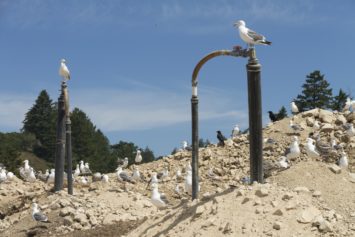Based on its Clean Air Act (CAA) Section 112 Residual Risk and Technology Review (RTR), the EPA is proposing amendments to its 2003 National Emission Standards for Hazardous Air Pollutants (NESHAP) for the Municipal Solid Waste (MSW) Landfill source category.

Apart from new electronic reporting and startup, shutdown, and malfunction (SSM) provisions that apply to all NESHAP categories, the proposed amendments are minor and mainly intended to provide landfill operators with more flexibility in meeting their legal requirements. The Agency notes that the proposed amendments may provide a small improvement in air quality but with no increase in compliance costs and possibly with a reduction in those costs.
The proposal affects MSW landfills that commenced construction, reconstruction, or modification on or after May 30, 1991, but before July 18, 2014. The Agency estimates that 738 active or closed facilities would be subject to the finalized amendments in 2023.
Results of Review
The CAA regulates hazardous air pollutant (HAP) emissions in two stages. The first stage involves establishing technology-based emissions standards; the second stage involves evaluating those standards to determine whether additional standards are needed to address any remaining risk associated with the emissions. The CAA also directs that every 8 years, the EPA must determine if there are developments in practices, processes, and control technologies that may be appropriate to incorporate into the standards.
The EPA is proposing to find that the risks of HAP emissions that the MSW landfill source category pose to human health are acceptable with an ample margin of safety. Furthermore, the Agency states that it did not identify emissions of any environmental HAP and, therefore, expects no adverse environmental effects.
Regarding the technology review, the EPA did identify three types of developments that could lead to additional control of HAPs from MSW landfills—practices to reduce HAP formation within a landfill, to collect more landfill gas for control or treatment, and to achieve a greater level of HAP destruction in the collected landfill gas. But after analyses, the Agency determined that the changes are either not technically feasible or the cost is not justified for the level of emissions reduction achievable.
Proposed Amendments
In addition to the proposed electronic reporting requirement and elimination of the exemption from emissions standards during periods of SSM, the Agency is proposing the following amendments to the MSW Landfill NESHAP:
- Streamline the NESHAP by incorporating the landfill gas control, operational standards, monitoring, recordkeeping, and reporting rule requirements (i.e.,the major compliance provisions) from the New Source Performance Standards (NSPS) program directly into the MSW Landfill NESHAP, thus minimizing cross-referencing to another subpart.
- Increase the temperature operating standard at wellheads by 14°F, from 131°F to 145 °F. The lower temperature limit is intended to prevent fires. However, the Agency indicates that it has received many requests from operators to increase the limit. The proposal would also require the landfill owner or operator to report any temperature readings that exceed 145°F in semiannual reports and maintain records of all temperature monitoring.
- Eliminate the operational standard and the corresponding corrective action for nitrogen and oxygen concentration. The EPA says it has concluded that nitrogen and oxygen concentration by itself is not an effective indicator of proper landfill gas system operation.
- Require weekly observations for subsurface oxidation events, as well as weekly monitoring of carbon monoxide, oxygen, and methane.
- Add a definition of cover penetration to clarify the requirement that readings of methane concentrations must be taken where distressed vegetation and cracks or seeps in the cover are observed.
- Provide more flexibility when gas collection and control systems (GCCSs) may be capped, removed, or decommissioned.
Environmental Impact
The EPA notes that some landfills may find that adjustments made to the oxygen and nitrogen and temperature wellhead operating standards provide enough operational flexibility to install, expand, and operate additional voluntary GCCSs, which could reduce emissions. Also, other proposed revisions that affect testing, monitoring, recordkeeping, and reporting will ensure that the GCCS equipment continues to perform as expected, says the Agency.
